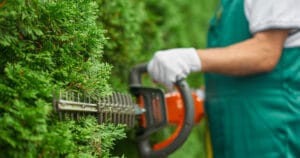You don’t have a green thumb: your plants are having trouble surviving in your home, despite good lighting and all your love. Maybe your plants are watered too often or, on the contrary, do not receive enough water? Watering has a major impact on the health of plants and is an element that is often neglected. It is not uncommon to believe that a plant is sick or has an insect infestation when it is a deficient watering that puts it in this pitiful state. Watering is an art that you can master quite easily if you listen to your plants.
When to water?
It would be so simple if there was a miracle recipe for all plants, but unfortunately, it is not. Each plant has specific needs and several factors can influence these needs such as the temperature, the time of the year, the humidity level of the room, the type of pot or soil, etc. You must therefore be attentive to the signs that your plants give you to know when it is time to water.
Signs of lack of water
If your plant seems to be in bad shape, it’s possible that it’s thirsty. Here are some signs of lack of water:
- Flower buds remain green and fall off before opening;
- The edges and tips are brown and dry;
- The leaves are yellow and wilted, sagging .
Signs of excess water
If your potting soil is still moist or even wet, and your plant is not in great shape, it may be due to overwatering. This is possibly the case if:
- Algae appear on the top of the potting soil. Beware, sciarids or potting flies are fond of algae!
- Flower buds turn yellow and fall off.
- The leaves fall. Some may turn black before falling, which is an excellent indicator, but some remain green and fall anyways.
- The crown and roots rot. The plant becomes limp and the stems collapse under their own weight. A rotten smell may even be emitted.
- The leaves and stems are soft and have difficulty holding on.
How to avoid disaster?
Lack of or too much water does cause damage to the plant, but it is very rarely irreversible. Although there is no universal rule for watering, there are some basic principles to help you:
- Always plant your plants in specialized houseplant potting soil that is well-drained and designed to meet the needs of houseplants.
- Choose pots with drainage holes in the bottom so that water drains well. If your favorite pot doesn’t have any: you can make one or put your plant in a plastic pot and use your beautiful pot as a cover.
- After watering, always empty the saucer so that the roots are not bathed in water.
- Use your finger to check the condition of your soil. If it is dry up to the second joint: water, if not: wait!
- Ask a specialist in store about the specific needs of your plant. Some plants like to let the potting soil dry out completely before watering, while others need to stop watering completely for a certain period of time.
Watering and vacation
If you leave for a short or long period of time and no one can take care of your plants, don’t worry, they can survive. Here’s what to do to help them through this time:
- Water thoroughly before you leave and for this one time, leave water in the tray;
- Move your plants away from windows to limit evaporation;
- Put your green plants, not cacti or succulents, in a sealed clear plastic bag. The water will not evaporate and the plant will benefit from the humidity created.
Watering houseplants is not rocket science, but it does require special attention to avoid drying out or drowning the plants. Be on the lookout!







